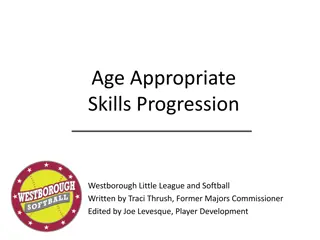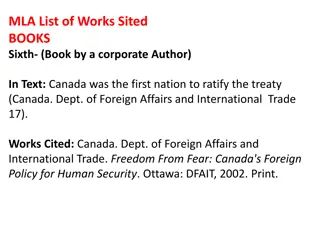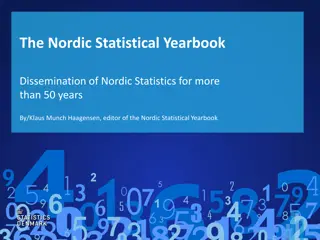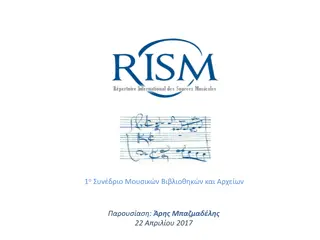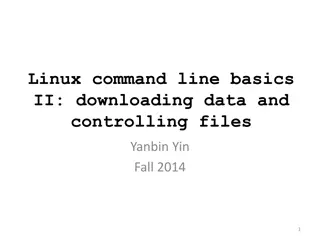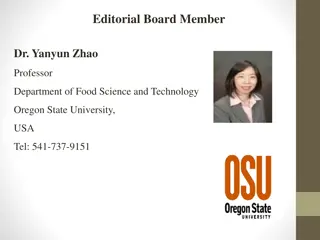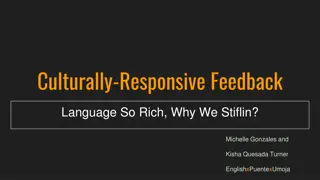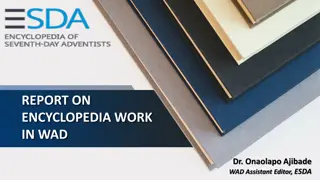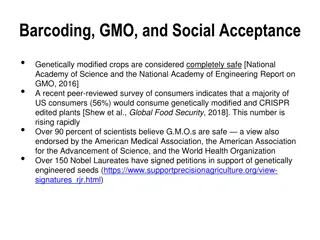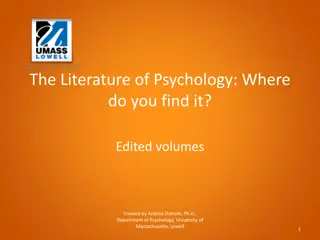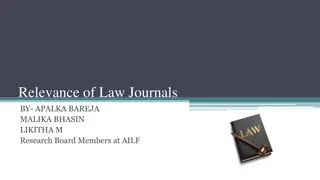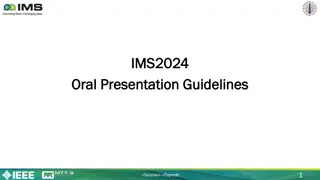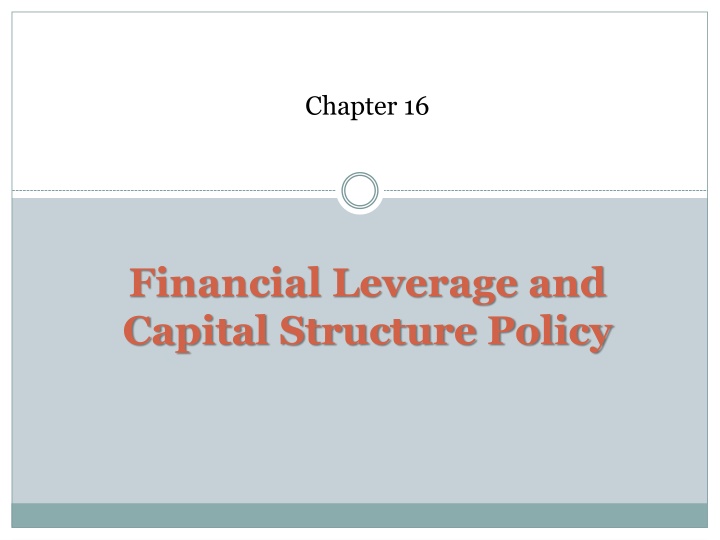
Financial Leverage and Capital Structure Policy
Explore the concepts of financial leverage, capital structure, and capital restructuring in this insightful guide that delves into the impact of leverage on EPS and ROE. Learn how to choose an optimal capital structure and maximize stockholder wealth effectively.
Download Presentation

Please find below an Image/Link to download the presentation.
The content on the website is provided AS IS for your information and personal use only. It may not be sold, licensed, or shared on other websites without obtaining consent from the author. If you encounter any issues during the download, it is possible that the publisher has removed the file from their server.
You are allowed to download the files provided on this website for personal or commercial use, subject to the condition that they are used lawfully. All files are the property of their respective owners.
The content on the website is provided AS IS for your information and personal use only. It may not be sold, licensed, or shared on other websites without obtaining consent from the author.
E N D
Presentation Transcript
Chapter 16 Financial Leverage and Capital Structure Policy
Key Concepts and Skills The capital structure question Understand the impact of taxes and bankruptcy on capital structure choice Capital structure and the cost of equity capital Bankruptcy costs Optimal capital structure
Financial Leverage Refers to the extent to which a firm relies on debt. The more debt financing a firm uses in its capital structure, the more financial leverage it employs.
Capital Restructuring We are going to look at how changes in capital structure affect the value of the firm, all else equal Capital restructuring involves changing the amount of leverage a firm has without changing the firm s assets The firm can increase leverage by issuing debt and repurchasing outstanding shares The firm can decrease leverage by issuing new shares and retiring outstanding debt
Choosing a Capital Structure What is the primary goal of financial managers? Maximize stockholder wealth We want to choose the capital structure that will maximize stockholder wealth We can maximize stockholder wealth by maximizing the value of the firm or minimizing the WACC
The Effect of Leverage How does leverage affect the EPS and ROE of a firm? When we increase the amount of debt financing, we increase the fixed interest expense If we have a really good year, then we pay our fixed cost and we have more left over for our stockholders If we have a really bad year, we still have to pay our fixed costs and we have less left over for our stockholders Leverage amplifies the variation in both EPS and ROE
Example: Financial Leverage, EPS and ROE What happens to EPS and ROE when we issue debt and buy back shares of stock? Current and proposed capital structures for the Trans corporation: Current 8,000,000 0 8,000,000 0 20 400,000 10% Proposed 8,000,000 4,000,000 4,000,000 1 20 200,000 10% Asset Debt Equity Debt-equity ratio Share price Shares outstanding Interest rate
Example: Financial Leverage, EPS and ROE Current Capital Structure : No Debt Recession $500,000 0 500,000 6.25% 1.25 $ Proposed Capital Structure : Debt= 4$ million $500,000 400,000 100,000 2.5% $ 0.5 Expected $1,000,000 0 1,000,000 12.5% 2.5 Expansion $1,500,000 0 1,500,000 18.75% 3.75 EBIT Interest Net income ROE EPS EBIT Interest Net income ROE EPS $1,000,000 400,000 600,000 15.00% 3 $1,500,000 400,000 1,100,000 27.50% 5.5
Example: Financial Leverage, EPS and ROE Variability in ROE Current: ROE ranges from 6.25 % to 18.75 % Proposed: ROE ranges from 2.5 % to 27.50 % Variability in EPS Current: EPS ranges from $ 1.25 to $ 3.75 Proposed: EPS ranges from $ 0.5 to $ 5.5 The variability in both ROE and EPS increases when financial leverage is increased
Break-Even EBIT Find EBIT where EPS is the same under both the current and proposed capital structures If we expect EBIT to be greater than the break-even point, then leverage may be beneficial to our stockholders If we expect EBIT to be less than the break-even point, then leverage is detrimental to our stockholders
Capital Structure Theory Modigliani and Miller (M&M)Theory of Capital Structure Proposition I firm value Proposition II WACC The value of the firm is determined by the cash flows to the firm and the risk of the assets Changing firm value Change the risk of the cash flows Change the cash flows
Capital Structure Theory Under Three Special Cases Case I Assumptions No corporate or personal taxes No bankruptcy costs Case II Assumptions Corporate taxes, but no personal taxes No bankruptcy costs Case III Assumptions Corporate taxes, but no personal taxes Bankruptcy costs
Case I Propositions I and II Proposition I The value of the firm is NOT affected by changes in the capital structure The cash flows of the firm do not change; therefore, value doesn t change Proposition II The WACC of the firm is NOT affected by capital structure
Case I - Equations WACC = RA = (E/V)RE + (D/V)RD RE = RA + (RA RD)(D/E) RA is the cost of the firm s business risk, i.e., the risk of the firm s assets (RA RD)(D/E) is the cost of the firm s financial risk, i.e., the additional return required by stockholders to compensate for the risk of leverage
Case I - Example Data Required return on assets = 12%; cost of debt = 8%; 1- What is the cost of equity & WACC? RE = 13% WACC = 12 % Equity 80% Debt 20% 2- What is the cost of equity & WACC? RE = 16% WACC = 12 % Equity 50% Debt 50%
Business Risk and Financial Risk Systematic risk of the assets, A, (Business risk) Level of leverage, D/E, (Financial risk)
Case II Cash Flow Interest is tax deductible Therefore, when a firm adds debt, it reduces taxes, all else equal The reduction in taxes increases the cash flow of the firm How should an increase in cash flows affect the value of the firm?
Case II - Example Firm U $1,000 0 $1,000 300 $700 Firm L $1,000 80 $920 276 $644 EBIT Interest Taxable Income Taxes (30%) Net income Cash Flow from Assets EBIT -Taxes Total Firm U Firm L Cash Flow To stockholders To bondholders Total Firm U 700 0 $700 Firm L 644 80 $724 1,ooo 300 $700 1,ooo 276 $724
Interest Tax Shield Tnterest Tax Shield : The tax saving attained by a firm from interest expense. Annual interest tax shield Tax rate times interest payment Annual tax shield = .30(80) = $24 Present value of annual interest tax shield Assume perpetual debt for simplicity PV = 24 / .08 = $300 PV =(TC D RD ) / RD =TC D = 1000 .30 = $300
Case II Proposition I The value of the firm increases by the present value of the annual interest tax shield Value of a levered firm = value of an unlevered firm + PV of interest tax shield VL = VU + DTC Value of equity = Value of the firm Value of debt Assuming perpetual cash flows VU = EBIT(1-T) / RU
The Static Theory of Capital Structure The theory that a firm borrows up to the point where the tax benefit from an extra dollar in debt is exactly equal to the cost that comes from the increased probability of financial distress.
Case III Capital Structure: Some Managerial Recommendations: Taxes: Firms that have substantial tax shields from other sources, such as depreciation, will get less benefit from leverage The higher the tax rate, the greater in incentive to borrow Financial Distress: Firms with a greater risk of experiencing financial distress will borrow less than firm with a lower risk of financial distress (EBIT) Financial distress costs will be determined by how easily ownership of those assets can be transferred (tangible)
The Pecking-Order Theory Firms prefer to use internal financing whenever possible.
Bankruptcy Costs Direct costs Legal and administrative costs Ultimately cause bondholders to incur additional losses Disincentive to debt financing Financial distress Significant problems in meeting debt obligations Firms that experience financial distress do not necessarily file for bankruptcy
More Bankruptcy Costs Indirect bankruptcy costs Larger than direct costs, but more difficult to measure and estimate Stockholders want to avoid a formal bankruptcy filing Bondholders want to keep existing assets intact so they can at least receive that money Assets lose value as management spends time worrying about avoiding bankruptcy instead of running the business The firm may also lose sales, experience interrupted operations and lose valuable employees
Bankruptcy Process Liquidation Chapter 7 of the Federal Bankruptcy Reform Act of 1978 Trustee takes over assets, sells them and distributes the proceeds according to the absolute priority rule Reorganization Chapter 11 of the Federal Bankruptcy Reform Act of 1978 Restructure the corporation with a provision to repay creditors




